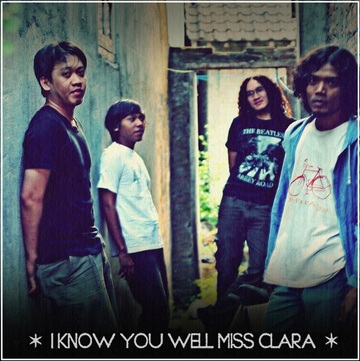
It is a mistake of some music enthusiasts to think of this collection as something minor. Rather, all the magnitude of even St. Matthew’s Passion can be found condensed into these works for two instruments. Not only are these sonatas magnificent, they are groundbreaking in the use of the keyboard as something more than an accompanying instrument. In Bach’s customary democratic way, he places the violin and keyboard on equal footing and creates the basis for the sonata for two instruments or duo-sonata. [Hans Eppstein, “Sechs Sonaten für Violine und Klavier,” 1973]
The present recording of these six sonatas is every bit as adventurous as the great Bach intended. The difference is evident from the opening moments of the first movement of the first sonata. Departing from Glenn Gould and Jaime Laredo, moving far ahead of Gustav Leonhardt and Sigiswald Kuijken, Keith Jarrett and Michelle Makarski lead us into the heart of what C.P.E. Bach called “among the best works of my dear father” and perhaps into the heart of Johann Sebastian Bach himself.
Jarrett has recorded Bach for ECM before but this is only the second time in which he has recorded Bach on piano instead of harpsichord. The first instance was the 1987 recording of Das Wohltemperierte Klavier, Buch 1. This is also his first classical recording since the 1998 recordings of the Mozart Piano Concertos.
Michelle Makarski is the violinist on this album. Schooled in classical music, she is also adept in jazz improvisation. Her first appearance with ECM was thanks to Keith Jarrett, as well. She guested on his 1994 ECM release Bridge of Light soloing on “Elegy for Violin and String Orchestra” and in duet with Jarrett on “Sonata for Violin and Piano.” The results were astonishing and ECM took sure notice. She appeared with the likes of Tomas Stanko on From the Green Hill (2000), the Hilliard Ensemble and others, as well as her own solo recordings Caoine (1999), Elogio per un’ombra with guest Thomas Larcher (2000) and To Be Sung on the Water (2006) with guest viola virtuoso Ronald Copes.

While Makarski must certainly be referencing the renewed friendship of herself and Jarrett, the long-time listener of Keith Jarrett will ask whether this might also apply to the old friendship between himself and Bach. Certainly Jarrett returns to Bach with a new vigor, a new understanding, a new heart.
The Adagio from Sonata No. 1 in B minor (BWV 1014) opens warmer, more emotional than any other recording of the work. Jarrett’s earlier Bach recordings have been labeled as “staid” or “straight” or even “stiff.” Not so here and now.
Jarrett and Makarski depart from the well-traveled road immediately and with great enthusiasm. Where others have introduced the Adagio with staccato phrasing, Jarrett opens with legato and the warmth is evident immediately. It is not Jarrett’s jazzy rhythms that astound here, it is his sustained notes. Michelle Makarski duets flawlessly with him.
Is it unorthodox? Yes. Is it wrong? Never. An analysis of the Urtext of Bach’s manuscripts quickly shows that Bach did not include notations for legato, staccato or any other embellishments. In fact, the practice of Bach’s time was to allow the performer great freedom for the development of phrasing within the realm of what was appropriate to the ear.

It has been a well-worn and mistaken belief that Bach is “cold” or “analytical” or “mathematically precise.” What Jarrett and Makarski reveal in such splendid detail is the soul of Bach and it is warm and sad and joyous.
One exquisite example is the sweet and melancholy Sonata No. 4 in C minor (BWV 1017). The 1st movement is the languid Largo with its deep sense of absence. Makarski uncovers every hidden pain and lays them on the altar of honest anguish. The 2nd movement is a tumultuous Allegro with its demanding and unbending requirement of virtuosity. The 3rd movement is the tranquil Adagio that offers respite and serene escape before the Allegro of the 4th movement grapples with the listener like the final struggle of Jacob and the angel.
This is immediately followed by the deep and soulful Sonata No. 5 in F minor (BWV 1018). This is the “de profundis clamo ad te” of the book. Perhaps the greatest of the six sonatas, the poignant and powerful Largo is as deep and moving as any music anywhere and Jarrett pours what must be his own melancholy into the performance of it. Makarski responds with her own “groanings that cannot be uttered” to create a moment of the most penetrating self-examination. It is the gathering storm before the downpour of the Allegro. In the wake of the maelstrom comes the reflective heartbreak of the Adagio. It is the Vivace of the 4th movement that stands astride suffering and urges us onward .
In this collection are six sonatas in six different keys—three major and three minor. Bach is nothing if not symmetrical. Each sonata is composed in four movements, with the sole exception of the sixth Sonata in G major which has five movements.
The regulated structure of each sonata is a graceful first movement, followed by a fast movement, with a slow, profoundly sweet third movement and a fast (presto, vivace or allegro) fourth movement. Within that framework, Bach explored the keys of B minor, A major, E major, C minor, F minor and G major, respectively.
Jarrett and Makarski follow that roadmap—with all its keys and tempos—to enthrall, embrace and enchant. Along the way there are moments that can only be created when the most sublime music is performed by the most empathic of musicians—musicians who know and, more importantly, feel what the composer set out to create.
Wondrously, this is what Keith Jarrett and Michelle Makarski have achieved together, to make us say “Surely, this is how it was meant to be.”
~ Travis L. Rogers, Jr.





 RSS Feed
RSS Feed
